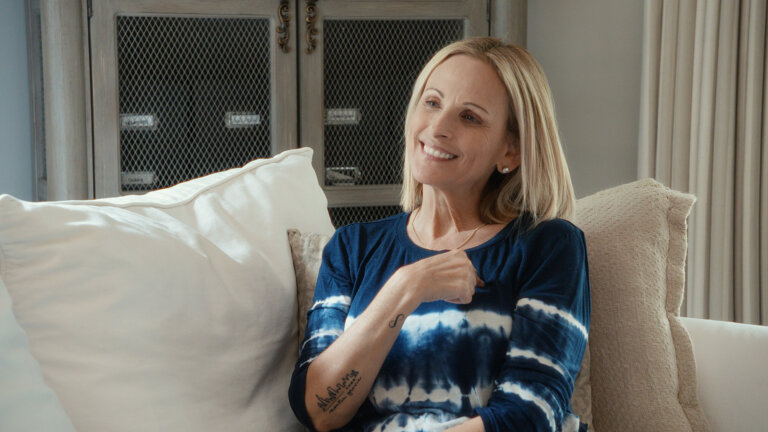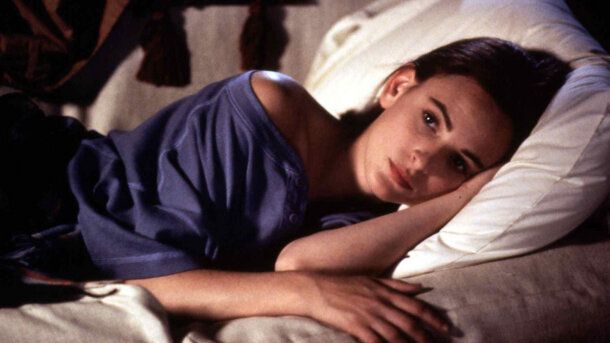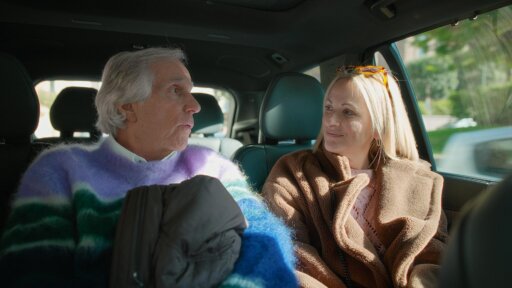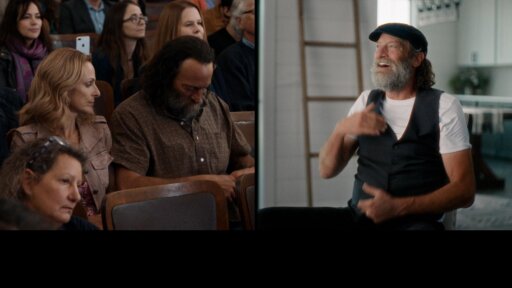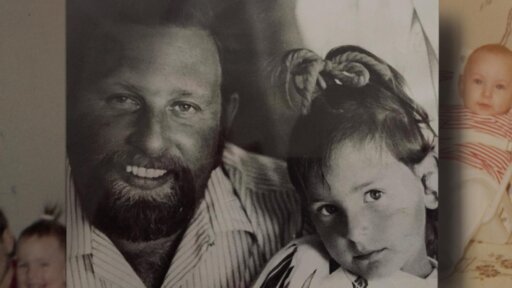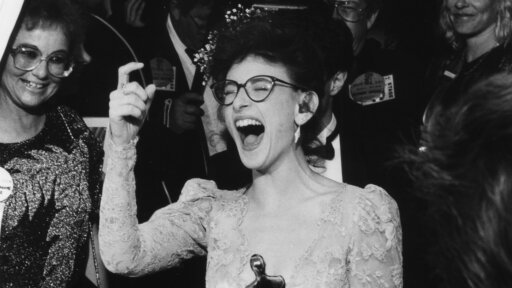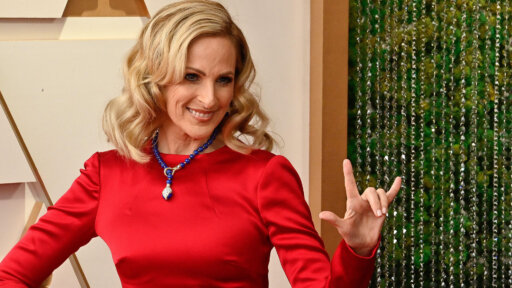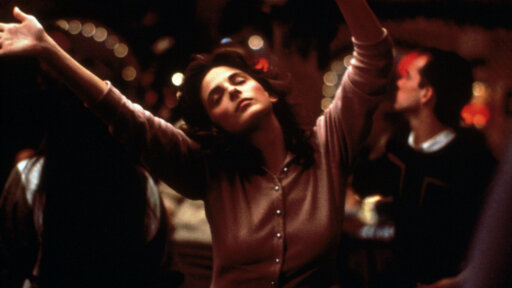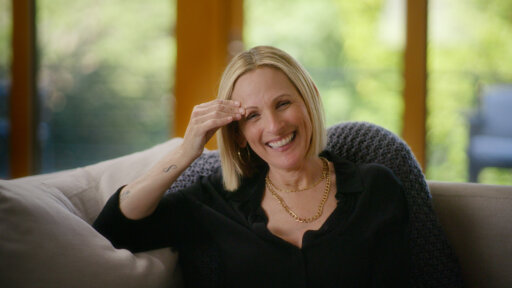March 30th, 1987—21-year-old Marlee Matlin, bespectacled and in a puff-sleeved purple gown, cautiously took the stage and changed the course of film history. Her Best Actress Oscar for the role of Sarah in the previous year’s film adaptation of “Children of a Lesser God” made her the youngest woman ever to take the category, and the first Deaf person to win an Academy Award. But what was obviously a groundbreaking first for the Deaf community was in some ways also a full circle moment.
Deaf people have a storied, albeit uneven, tradition in the history of cinema since the advent of the medium.
As speakers of a visual language with no official written form, Deaf people have long recognized the utility of film for our community, with film and video becoming an integral part of our literary and historical records. In 1913, when Deaf people were facing intense pressures from eugenicists to abandoned signed language and assimilate, Deaf activist George Veditz made the short film “Preservation of Sign Language” to record the full linguistic and emotional breadth of what American Sign Language could do; his film was recognized by the Library of Congress in 2010.
Meanwhile, through the early 1900s, Deaf people were enjoying mainstream access to film. Sensitive to the subtleties of facial expressions and body language, Deaf actors like Granville Redmond and Emerson Romero were well-known for their silent film work, and Deaf audience members could go to the movies alongside their hearing peers without worrying about missing out on dialogue. But by 1927, with the introduction of “talkies” and sound in film, Deaf people would be largely shut out of both the movie theater and the film industry for 50 years.
The Deaf community pivoted to building their own live theater companies, a rich tradition that continues today, while Hollywood produced a steady drip of films featuring characters written and acted by hearing people and trafficking largely in stereotypes. Deaf characters were isolated people to be pitied or magical lipreaders who could see through the dark across long distances, and sometimes both, but never fully human with motivations of their own.
Films like “The Miracle Worker” (1962) and “The Heart is a Lonely Hunter” (1968) featured hearing actors playing sad Deaf characters in need of saving, while “The Court Jester” (1955) had hearing actors and characters faking deafness, speech impediments and sign language as the punchline of a comedic ruse. Hearing audiences, and the Academy, typically reward appropriative displays of disability mimicry, often viewing it as a kind of “challenge” for actors to imbue disabled stories with humanity—statistically, nondisabled actors nominated for faking a disability have about a 50% chance of winning their category.
Matlin’s breakthrough role in “Children” presented a better way forward. Audiences responded, of course, to a young and beautiful new actress on the scene and the chemistry between her and co-star William Hurt, but casting Matlin also brought to light something long missing from the silver screen—a linguistic and emotionally authentic portrayal of the Deaf experience.
As a result of the visibility the film and Oscar afforded, Matlin also spearheaded activism to ensure that access to closed captions on television, and then streaming platforms, became the law and industry standard. After far too long, Deaf people finally had a home again in film.
Unfortunately, Deaf characters created and acted by hearing people continued to be a Hollywood staple even after “Children” and into today; Matlin even noted that she had to threaten to quit the cast of “CODA” to ensure a hearing man was not cast opposite her in the role that eventually went to Troy Kotsur. These stories reveal a basic failure of participants’ imagination in understanding what it means to be deaf. Often, when hearing, nonsigning actors take on signing roles, it’s not only the emotional honesty, but also the basic meaning of the lines, that is lost.
When Deaf people are hired for Deaf roles, things improve.
Stories written by hearing people naturally continue to center hearing protagonists and interests, but the mere fact of Deaf people on set necessarily shifts a project toward a more authentic portrayal as directors, actors, camera operators and costumers learn about the mobility, sight lines and framing strategies required for visual communication. Perhaps most importantly, the process of working together forces hearing folks previously unfamiliar with the Deaf world to reckon with our humanity, that we have our own points-of-view and stories to tell.
Matlin, Daniel Durant and Troy Kotsur made another Deaf history first with 2022’s Best Picture win for “CODA,” for which Kotsur took home Best Actor and became the second Deaf Oscar winner. It’s telling, I think, that the title Marlee Matlin: Not Alone Anymore, actually derives from this moment and ultimately the achievement of another Deaf artist; Kotsur’s Oscar win marked the end of the 35-year-stretch where Matlin was the only Deaf Academy Award winner and often the only Deaf actor known to mainstream audiences.
In the documentary, Deaf actor Lauren Ridloff underscores this theme by pointing out the similarities between the signs for “first,” “only” and “alone” in ASL, the bittersweetness of being first, of coming home only to find the house is empty. After all, it is only through collaboration and in community that great movies are made.
In this way, Marlee Matlin: Not Alone Anymore is also a game-changer—Shoshannah Stern’s keen directorial work and Deaf-centered choices in the documentary both elevate Marlee’s story and protect it from veering into “inspiration porn” territory. Even as the presence of Deaf actors becomes more common, Deaf-centric stories by Deaf creators have been basically nonexistent in the mainstream, the 2018 Sundance TV series “This Close” (co-created by Stern) and Nyle DiMarco’s “Deaf President Now!” documentary from earlier this year as notable exceptions.
A world where Deaf artists have the autonomy to tell our stories, not only before the camera but from behind it, is the next frontier in Deaf film. We’re on our way—this time, together.

